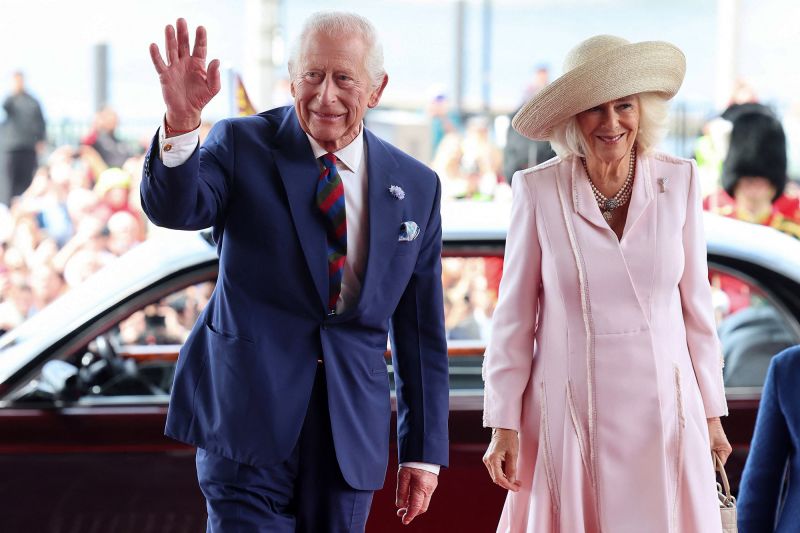Britain’s King Charles III and Queen Camilla are planning to head down under.
The royal couple will travel to Australia in October as part of a tour that will also see them visit Samoa for this year’s Commonwealth Heads of Government Meeting, Buckingham Palace announced on Sunday.
The forthcoming visit to Australia will be the 75-year-old British monarch’s first trip to a Commonwealth realm since he ascended the throne. In addition to the United Kingdom, Charles is also head of state in 14 realms including Australia, New Zealand and Canada, though his role is largely ceremonial.
Charles and Camilla are visiting the nation “at the invitation of the Australian government, where their program will feature engagements in the Australian Capital Territory and New South Wales,” the palace said.
He last visited Australia with his wife six years ago, when they traveled to the Gold Coast for the opening of the 2018 Commonwealth Games.
Commonwealth Heads of Government Meetings – or CHOGM as they are known – are held every two years, with member states taking turns as host. The theme of this year’s event in Samoa, Charles’ first as head of the organization, is “One Resilient Future: Transforming Our Common Wealth,” and will see delegations from the 56 member states come together.
“Their majesties’ state visit to Samoa will celebrate the strong bilateral relationship between the Pacific Island nation and the UK,” the palace added.
Charles, who resumed public-facing duties in April as he continues his treatment for cancer, has had a busy calendar in recent months. Last month, he attended D-Day commemorations in France.
More recently, he appointed Keir Starmer as prime minister after the Labour Party won a landslide victory at the polls, traveled to Scotland for the annual “Holyrood Week” celebrating Scottish culture and on Thursday visited the Welsh parliament in Cardiff to mark 25 years since Welsh devolution. On Monday, the royal couple are headed to the Channel Islands for a two-day visit.
Further details on the king and queen’s tours are expected to be revealed in the coming months. However, a palace spokesperson said that similarly to all of Charles’s recent engagements, “his program in both countries will be subject to doctors’ advice, and any necessary modifications on health grounds.”
Some may wonder why the royal couple are not going to New Zealand while they are in the region. The palace spokesperson said that decision was made in consultation with the king’s medical team who advised that “such an extended program should be avoided at this time” in order to prioritize his continued recovery.
“In close consultation with the Australian and New Zealand prime ministers, and with due regard for the pressures of time and logistics, it has therefore been agreed to limit the visit to Samoa and Australia only,” the spokesperson said.
“Their majesties send their warmest thanks and good wishes to all parties for their continued support and understanding,” they added.
The king’s absence from undertaking any visits to any of the Commonwealth realms since his accession had raised eyebrows. There was much surprise when his first overseas tours as monarch were announced as France and Germany. Those were followed by travel to Kenya, which is a Commonwealth member but not a realm.
GET OUR FREE ROYAL NEWSLETTER
Charles’ visit to Australia will be a key test of his popularity as head of state. The nation – which was colonized by the British in 1788 – has long debated whether a long-distance monarch is still needed. A 1999 referendum on the issue saw voters opt to remain a constitutional monarchy, 55% to 45%.
In other Commonwealth nations, Queen Elizabeth II’s death renewed rumblings – some louder than others – of moves to sever ties with the crown and become republics. But in Australia, despite Prime Minister Anthony Albanese’s pro-republic views, there has been no immediate push in that direction.
Albanese had proposed to hold a referendum over whether the nation should become a republic if he secured a second term in 2025. However, those plans appear to have been shelved to focus on more pressing challenges at home like the cost-of-living crisis.

